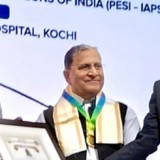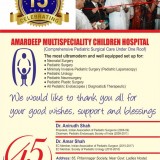It is a long established fact that a reader will be distracted by the readable content of a page when looking at its layout. The point of using Lorem Ipsum is that it has a more-or-less normal distribution of letters, as opposed to using ‘Content here, content here’, making it look like readable English. Many desktop publishing packages and web page editors now use Lorem Ipsum as their default model text, and a search for ‘lorem ipsum’ will uncover many web sites still in their infancy. Various versions have evolved over the years, sometimes by accident, sometimes on purpose (injected humour and the like).
It is a long established fact that a reader will be distracted by the readable content of a page when looking at its layout. The point of using Lorem Ipsum is that it has a more-or-less normal distribution of letters, as opposed to using ‘Content here, content here’, making it look like readable English. Many desktop publishing packages and web page editors now use Lorem Ipsum as their default model text, and a search for ‘lorem ipsum’ will uncover many web sites still in their infancy. Various versions have evolved over the years, sometimes by accident, sometimes on purpose (injected humour and the like).
INFORMATION AVAILABLE IN ENGLISH / GUJARATI AND HINDI
VIDEO ASSISTED THORACIC SURGERY (VATS)
VATS is a technique which involves surgery for various pathologies in the chest using key hole surgery. This is commonly known as thoracoscopy. Thoracic surgeries used to be done using large incisions. However, with technical advances and surgical expertise, these can now be done using 3 and 5 mm instruments.
Throacoscopy is commonly performed for the following pathologies in children :
- Empyema (Pus in the chest)
- Lobectomies – Removal of the part of the lung
- Cysts in the lung ( e.g. hydatid cysts, bronchogenic cysts)
- Cysts of the oesophagus (e.g. duplication cysts)
- Tumors in the chest (Tuberculosis, malignant tumors)
- Thymic tumors
- Diaphragmatic hernias
- Oesophageal atresias with tracheo-esophageal fistulas
GUJARATI
થોરેકોસ્કોપી
થોરેકોસ્કોપી નાના છિદ્રો દ્વારા છાતીનાં રોગો માટે દૂરબીનથી આૅપરેશન કરવાની ટેકનિક છે. ‘લેપ્રોસ્કોપી’ પેટનાં આૅપરેશન માટે છે. ‘થોરેકોસ્કોપી’ છાતીના આૅપરેશન માટે છે.
છાતીનાં આૅપરેશન પહેલાં ખૂબ મોટા કાપા પાડી કરવામાં આવતાં હતાં. પણ આધુનિક ટેકનોલોજી અને સર્જનની કુશળતા થી હવે ૩ મીમી અથવા ૫ મીમી નાં નાના નાના છિદ્ર દ્વારા જટિલ છાતીનાં આૅપરેશન કરવામાં આવે છે.
થોરેકોસ્કોપી દ્વારા થતાં મુખ્ય આૅપરેશનો :
૧) બાળકની છાતીમાં પરૂ થવું (ઍમ્પાઈમા)
૨) ફેફસાંનો અમુક ભાગ ખરાબ હોય તો તે કાઢવાના આૅપરેશન
૩) ફેફસાંમાં સીસ્ટ હોય (દા.ત. હાયડેટીડ સીસ્ટ )
૪) અન્નનળીની ગાંઠો ( ડૂપ્લિકેશન સીસ્ટ)
૫) છાતીમાં ટી.બી. અથવા કેન્સરની ગાંઠ.
૬) નવજાત બાળકમાં શ્વાસનળી અને અન્નનળી જાઇન્ટ હોય.
૭) થાયમસ ગ્રંથિની ગાંઠનું આૅપરેશન.
આમ, અનેક પ્રકારનાં બાળકોના છાતીનાં રોગોનું આૅપરેશન થોરેકોસ્કોપી દ્વારા સર્જન સહેલાઈથી કરી શકે. આૅપરેશન બાદ દુઃખાવો પણ ખૂબ ઓછો થાય છે અને બાળકને હાÂસ્પટલમાંથી પણ વહેલી રજા મળી શકે છે.
આ આૅપરેશન ઓપન આૅપરેશનથી વધુ ખર્ચાવાળા નથી હોતાં. •
HINDI
थोरेकोस्कोपी
यह सर्जरी छाती के विभिन्न रोगों के लिए छोटे छिद्र करके दूरबीन से ऑपरेशन करने की तकनीक है। इसे सामान्य तौर पर थोरेकोस्कोपी कहा जाता है।
छाती के रोगों के लिए पहले के समय में बहुत बड़ा चीरा करके ऑपरेशन किया जाता था। लेकिन आधुनिकी उन्नत तकनीकों और सर्जन की विशेषज्ञाता से अब ३द्वद्व और ५द्वद्व के छोटे छेद करके इतने ही आकार के उपकरणों से छाती के जटिल ऑपरेशन किये जाते हैं।
मुख्य रूप से यह ऑपरेशन बच्चों में नीचे दिये गये रोगों के लिए किया जाता हैः
१) बच्चे की छाती में मवाद (Empyema)
२) फेफडों के किसी खराब हिस्से को ऑपरेशन से निकालना
३) फेफडों में सिस्ट (जैसे की Hydatid सीस्ट)
४) आहारनली की गांठे (डुप्लीकेशन सीस्ट)
५) छाती में टी.बी. या कैंसर की गांठ
६) नवजात शिशु की श्वासनली और अन्ननली जॉइन्ट होने पर
७) थाइमस ग्रंथि की गांठ
इस प्रकार बच्चों की छाती के रोगों के कई ऑपरेशन थोरेकोस्कोपी द्वारा सर्जन बहुत ही कुशलता से करते हैं। इस ऑपरेशन से बच्चे को बहुत कम दर्द होता है और अस्पताल से जल्दी छुट्टी मिल जाती है। ये ऑपरेशन ओपन ऑपरेशन से अधिक खर्चीले नहीं होते। •




